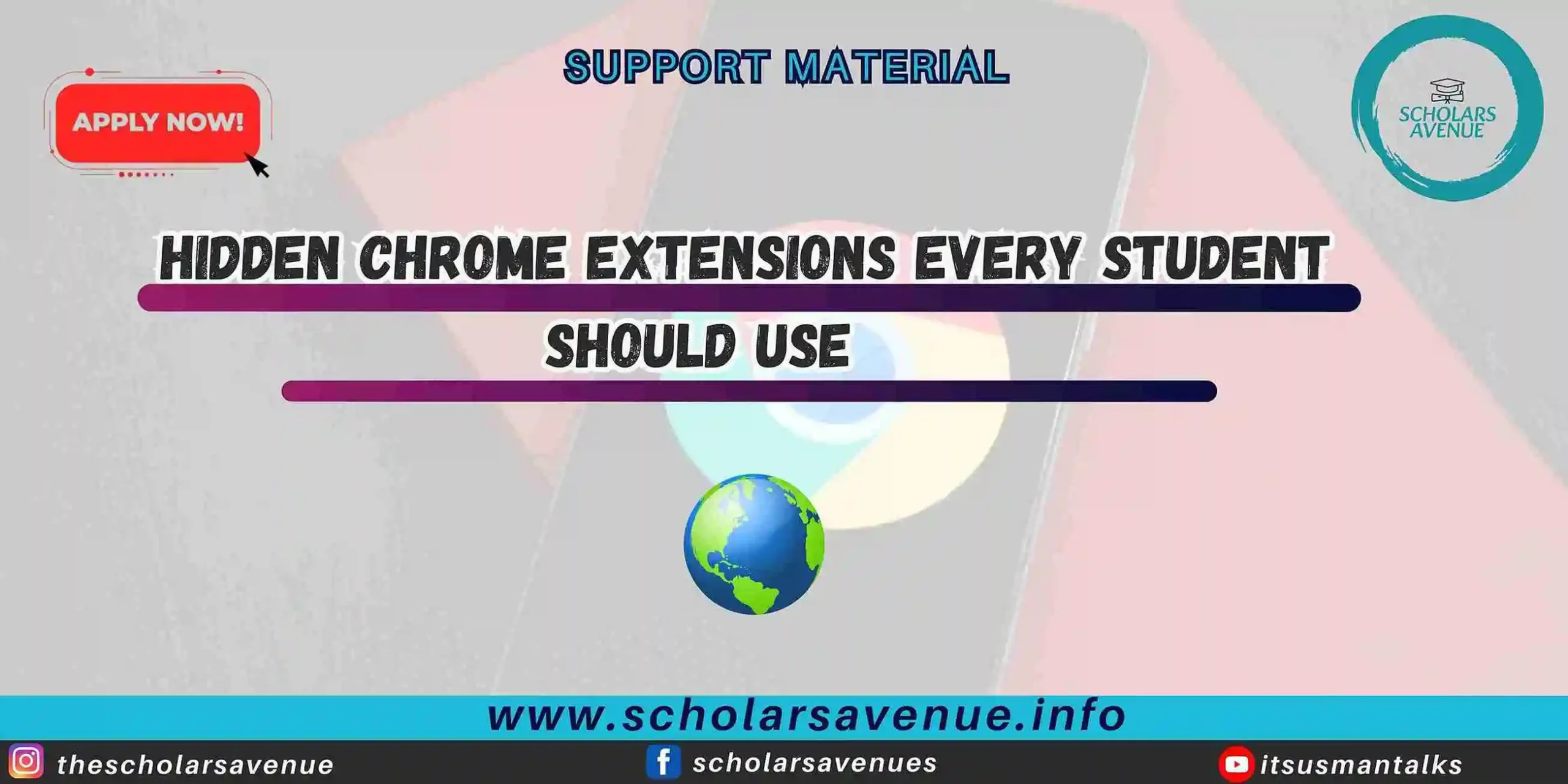One cannot overstate the value of a well-organized personal portfolio in the present professional and academic scene. A digital portfolio is a critical self marketing tool for those students wishing to qualify for scholarships, admission to universities, or research trips overseas. Not only does it show off your results in extracurricular and academic but also your dedication to personal and corporate development. Knowing how to create a portfolio that reflects your individual trajectory and objectives can help you to stand out among hundreds of candidates.
Creating a personal website or portfolio is no more something only designers or coders can do. Intuitive platforms and user friendly products are now readily accessible, allowing individuals in all fields to develop a impactful digital presence. This guide walks you through the essential steps on how to create a portfolio that is polished, strategic, and reflective of your personal brand. These insights will assist you in building a portfolio that really shines, whether you are only starting your journey or seeking to upgrade your current site
Also check, Fully Funded BMW Fastlane Masters Program 2025- 2026
Benefits of creating a Portfolio or Personal Website
Before diving into the technical steps of how to create a portfolio, it’s important to understand the significance of having one, especially in today’s academic and professional spheres More than a stylish internet presence, a well organized personal website or digital portfolio is a strategic asset. Your portfolio offers decisionmakers a curated view of your achievements, hobbies, and potential, whether you are seeking university admission, a scholarship, or a challenging employment. building credibility, reinforcing your excellence standards, and telling your story in a way resumé by itself cannot communicate.
- Visibility: Your portfolio makes you discoverable by selection committees, professors, and scholarship panels.
- Credibility: It showcases your work beyond a resume
- Professionalism: It tells the world you take your ambitions seriously.
How to Create a Portfolio or Personal Website
1. Choose the Right Platform
Choosing the right platform to be the base of your digital presence is the first phase in understanding how to create a portfolio or personal website. Your chosen platform should reflect not just your technological comfort level but also your ambitions either, academic, creative, or otherwise. At this stage, it’s important to consider whether you want a comprehensive personal website or a streamlined portfolio. A personal website offers space for blogs, updates, and your CV, while a focused portfolio highlights specific achievements and projects. Begin by identifying your priorities and the message you want your digital presence to convey. Here are some beginner-friendly platforms to consider:
- Google Sites: Super beginner-friendly and clean, without worrying about coding or design.
- Wix: Drag-and-drop simplicity.
- WordPress: Great for blogging and portfolio combinations.
- Carrd: Perfect if you want a one-page wonder.
- Notion: Aesthetic and modern, great for tech-savvy folks.
- GitHub Pages (for coding portfolios): Bonus points for tech scholarship applicants!
2. Structuring Your Portfolio
Ensure that your personal website or portfolio is logically and professionally structured, as this acts as your digital elevator pitch. The layout and organization of your content should be intuitive, allowing visitors to quickly grasp who you are and what you bring to the table. Use clear headings, consistent formatting, and well-placed visuals to guide your viewer’s attention. A thoughtfully arranged site enhances your credibility and helps distinguish you from the competition, especially in high-stakes application scenarios. Here’s a smart layout for learning how to create a portfolio:
1. Home Page
- Introduce yourself in 2–3 lines.
- Add a recent professional-looking photo.
2. About Me
- Your academic journey
- Personal story, values, and goals
- Any fun facts to humanize you
3. Resume/CV Section
- Embed or link your PDF resume
- Optionally, list major sections directly
4. Achievements
- Scholarships, awards, internships
- Organize them chronologically or by type
5. Projects/Portfolio
- Writing samples, research work, code, videos, art
- Add thumbnails, short descriptions, and links
6. Blog (Optional but Powerful!)
- Share lessons from webinars, your scholarship application story, etc.
7. Contact Page
- Professional email, LinkedIn, or a contact form
3. Make It Visual and Interactive
One must always keep in mind that pictures carry more weight than words when learning how to create a portfolio that really connects. Show instead of just tell. A strong portfolio uses engaging graphics and interactive elements to provide an immersive experience rather than relying only on text to express your worth.
- Use photos, thumbnails, icons
- Add short videos introducing your project or journey
- Embed PDFs, presentations, and certificates
Also check, Scholarships for Climate and Sustainability Fields
4. Optimizing Your Portfolio with SEO and Strategic Keywords
Your personal website or portfolio should preferably be the first result people find when they look for your name online. Developing a solid digital presence and professional image relies on this level of visibility. Knowing how to create a portfolio that search engines favour not only helps you to be more reputable but also guarantees that your accomplishments, goals, and work are promptly available to academic institutions, employers, or scholarship committees. From SEO-friendly titles to personalized domains and strategic keyword integration, optimizing your site plays a key role in presenting yourself as a proactive and prepared candidate.
- Use your full name in the website title
- Add keywords like “Chevening Scholar,” “Aspiring Data Scientist,” or “Award-winning Writer”
- Customize your URL: yourname.wordpress.com or even better, buy your domain!
5. Update It Like a Digital Journal
Understanding how to create a portfolio is just the first phase on your career path; what really distinguishes you is constant maintenance and updating. A stationary website loses its worth fast in the dynamic terrain of industry and academia. Common updates exhibit not just your changing capabilities and accomplishments but also your attention to detail, dedication, and professionalism. Your development is clearly demonstrated in a well maintained portfolio.
- Add new projects regularly
- Share your wins, even small ones
- Keep your contact info and resume fresh
6. Mistakes to Avoid while creating a portfolio
Even after doing everything right and working hard to create a impactful portfolio or personal website many people mess up here. Here’s what not to do:
- Using flashy colors or unreadable fonts
- Overcrowding your homepage
- Linking to empty pages
- Making spelling or grammar errors
- Not testing your site on mobile
7. Portfolio Examples for Inspiration
If you find yourself feeling unsure or lacking inspiration, here are some exemplary personal portfolio websites ideas that will encourage you to create your portfolio of achievements and possibilities. These portfolios are more than just aesthetically pleasing; they are thoughtfully designed, purpose-driven, and positioned to leave a lasting impact. Use them as a source of inspiration for understanding how to create a portfolio for yourself.
- Creative Portfolio (For Designers/Artists): A minimalistic layout that focuses on imagery, showcasing the artist’s work with clear project details.
- Tech Portfolio (For Programmers): Clean and sleek, with code snippets and live project links that show off technical skills in action.
- Content Creator Portfolio (For Writers/Bloggers): Engaging content paired with relevant visuals and links to publications or projects.
Also check, LinkedIn for Scholarship Seekers: A Beginner’s Guide
In essence, developing a professional identity is best accomplished by means of a personal portfolio or website rather than just a digital design project. You can produce a portfolio that really highlights your talents, accomplishments, and aspirations if you have the appropriate tools and a clear vision. Learning how to create a portfolio is a crucial step in establishing a professional digital presence. Following the directions laid out in this manual will help you create a professional and interesting portfolio that distinguishes you from others. Remember, dedicating time to your portfolio today will pay off in the doors you open tomorrow since it reflects your personal and professional path.
Looking to maximize your chances of acceptance?
Consider using our Professional Services to polish your application and stand out from the crowd.
For detailed videos on relevant opportunities check out:
Frequently Asked Questions (FAQs)
Do I need advanced technical skills to create a portfolio or personal website?
No, you don’t need to be a tech expert to create a stunning portfolio. Platforms like Wix, WordPress, and Notion offer user-friendly templates that allow you to build a professional site with minimal coding knowledge
Can a portfolio replace a traditional resume?
While a portfolio can be a powerful supplement to your résumé, it does not entirely replace it. A résumé is still essential for formal applications, but a portfolio adds depth by demonstrating your skills, projects, and personality.
How often should I update my portfolio or website?
t’s important to regularly update your portfolio to reflect your most recent accomplishments and skills. Aim to review and refresh your site every 3-4 months, especially if you’ve completed new projects or received recognition for recent work
Should I include personal interests or hobbies on my portfolio?
While your portfolio should primarily focus on your academic and professional achievements, adding a small section on your personal interests or hobbies can humanize you.
Is it necessary to have a blog on my portfolio or website?
A blog is not mandatory but can significantly enhance your portfolio. It allows you to share insights, lessons, and personal experiences that demonstrate your thought leadership and expertise.
Can I use free platforms to create a portfolio, or should I invest in a paid domain?
You can absolutely start with free platforms like Wix, WordPress, or Carrd. However, if you’re serious about building a long-term professional presence, investing in a paid domain is highly recommended. t gives you a custom, more polished URL (e.g., yourname.com) that boosts your credibility and adds a layer of professionalism to your online presence.
What content should I include in my portfolio to make it stand out?
Your portfolio should include sections like your resume, academic achievements, projects, and any relevant work samples. Including testimonials from mentors or colleagues can add authenticity, while an organized layout with clear navigation makes your portfolio more user-friendly.
What if I don’t have many achievements yet, can I still create a portfolio?
Absolutely! Even if you’re early in your academic or professional journey, your portfolio can focus on your potential, goals, and the projects you’ve started working on. Highlight any relevant coursework, personal projects, or volunteer experiences that demonstrate your skills and ambition









